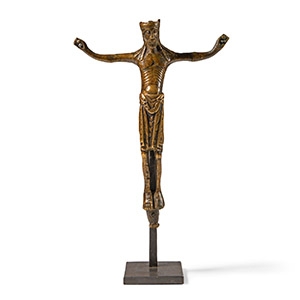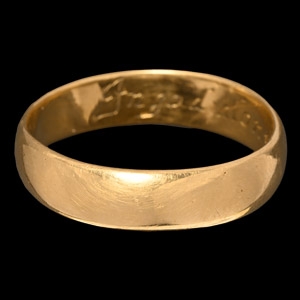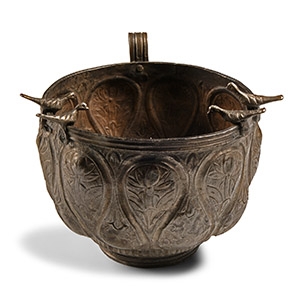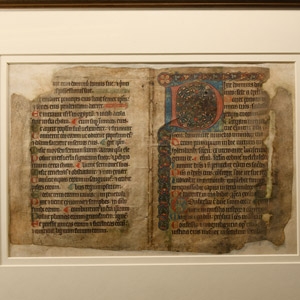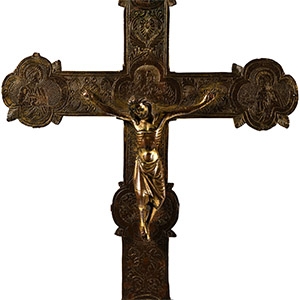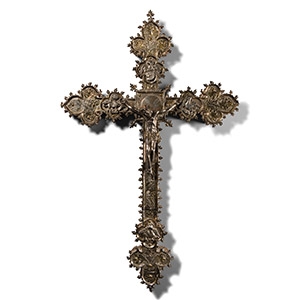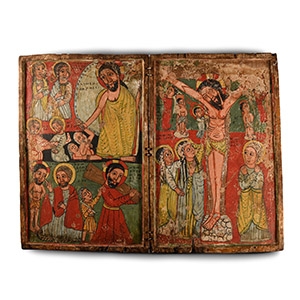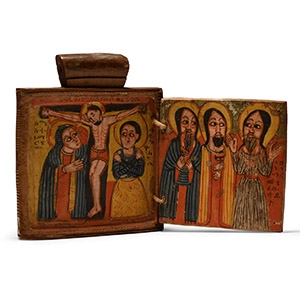Home > Auctions > 5 - 9 March 2024: Ancient Art, Antiquities,
Natural History & Coins
Auction Highlights:
Ex Lionel collection, formed 1980s.
From the Horton collection, UK.
Ex Notaras Coins & Antiquities, 2014.
European private collection.
This lot has been checked against the Interpol Database of stolen works of art and is accompanied by search certificate no.12120-211871.
Cf. Chadour, A.B., Rings. The Alice and Louis Koch Collection, volume I, Leeds, 1994, item 617, for type.
Ex D.S. Lavendar, London, UK.
Property of a North American gallery, acquired in 2012.
This lot has been checked against the Interpol Database of stolen works of art and is accompanied by search certificate no.12121-214333.
Cf. The British Museum, London, inv.no.AF771, for a comparable ring.
The inscription, a means of expressing agreement, has not yet been matched to a particular family motto. However, the Anglo-Saxon words and the possible later date of the ring suggests that this is a motto descended from one of the Marcher Lords, or Knights Marchers. The latter occupied the border land between Wales and England, and were granted special privileges and status by William the Conqueror, and were virtually independent rulers.
Acquired on the London art market in the late 1980s-1990s.
From the family collection of an East London, UK, gentleman.
Former collection of the late (d.1955) Bishop of Tournus.
This lot has been checked against the Interpol Database of stolen works of art and is accompanied by search certificate no.12040-211844.
Cf. Zarnecki, G., Holt, J. & Holland, T., English Romanesque Art 1066-1200, London, 1984, item 236, for type.
with Sotheby's, London, 7 December 1999, no.9.
with Francis Janssens van der Maelen, 11 March 2003, no.997.
Private collection, Suffolk, UK.
Accompanied by a previous illustrated catalogue page.
This lot has been checked against the Interpol Database of stolen works of art and is accompanied by search certificate no.12043-212164.
with Lopez de Aragon, Madrid, 2014.
This lot has been checked against the Interpol Database of stolen works of art and is accompanied by search certificate no.12044-212171.
Cf. Wixom, W.D., Mirror of the Medieval World, New York, 1999, item 225, for type.
Ex Claudia Belcher, London, until 2005.
This lot has been checked against the Interpol Database of stolen works of art and is accompanied by search certificate no.12045-212183.
Ex Alistair McAlpine collection, 2004.
Ex central London gallery.
See Chojnacki, S., Major Themes in Ethiopian Painting, indigenous developments, the influence of foreign models and their adaptation, from the 13th to the 19th century, Wiesbaden, 1983, figs.90, 91, for similar Crucifixion and Resurrection scenes.
The icon shows Western influence on Ethiopian art. The Crucifixion image contains many elements of this iconography which are found in many Oriental and Western art of the Middle Ages, but with significant changes from the previous representations: Jesus is nailed with three nails and not four, the head leaning towards his right shoulder and the hair falling on his shoulders. Following the Western influence, Christ is represented in a spasm of physical pain, and consequently a more detailed anatomy of his chest and abdomen is depicted. This concept of the Crucifixion, common in the Italian Late Middle Age and Renaissance art, found its way to Ethiopia at some time towards the end of the 15th century, or at the beginning of the 16th century. As in the majority of the Resurrection icons of this period, Christ is dressed in a long robe with a cloak or toga draped over one shoulder.
Ex Henry Brownrigg, 1999.
Ex property of a London lady, part of her family's collection.
Accompanied by an academic report by Dr Raffaele D’Amato.
This lot has been checked against the Interpol Database of stolen works of art and is accompanied by search certificate no.11545-196368.
See Psilakis, N., Byzantine Churches and Monasteries of Crete, Heraklion, 1998; Evans, H.C., The Arts of Byzantium, New York, 2001; for the iconography of the scene see Horn, M., ‘The incredulity of Saint Thomas on a Byzantine Sapphire from the Cheapside Hoard, London: A proposal for a new dating to the Palaiologan Period’ in Bosselmann-Ruickbie, A. (ed.), New Research on Late Byzantine Goldsmiths Works (13th-15th centuries), BOO, bd 13, Mainz, 2019, pp.165-183.
The icon represents a well known iconography from the New Testament, Gospel of Saint John, chapter 20, in which the resurrected Christ stands beside ‘Doubting Thomas’, supposedly the most sceptical of the twelve apostles. In this chapter Christ appears to Thomas’s fellow disciples while Thomas himself is absent and upon his return, Thomas’s friends tell him about Christ’s resurrection, which Thomas does not believe in. After eight days pass, Jesus comes again, and this time Thomas is confronted by his Lord: “Reach hither thy finger, and behold my hands, and reach hither thy hand, and thrust it into my side, and be not faithless, but believing.”
313 - 324 of 2726 LOTS

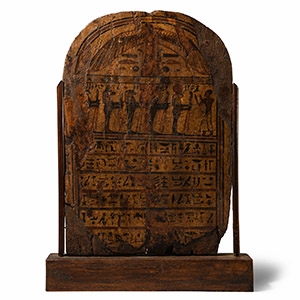
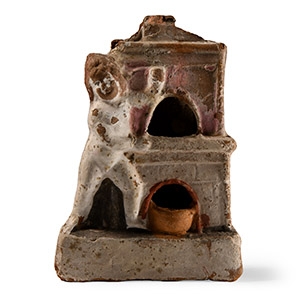

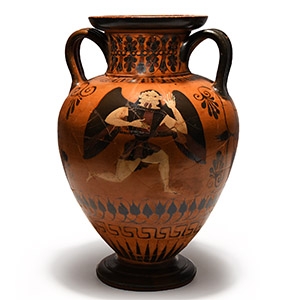
.jpg)
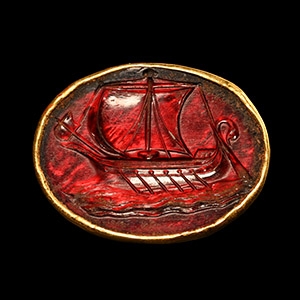
.jpg)

.jpg)
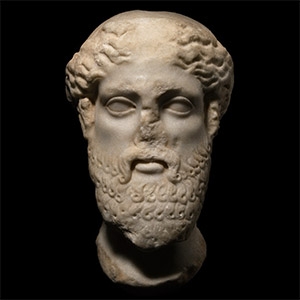
.jpg)
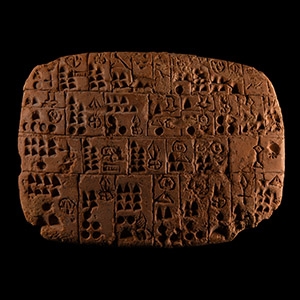

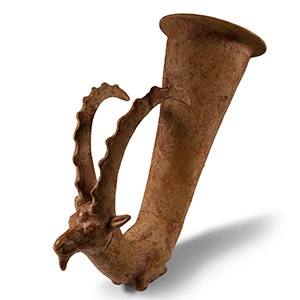
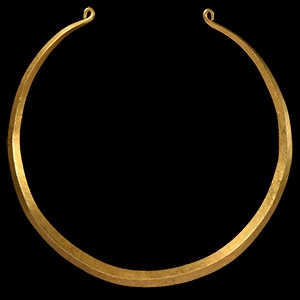
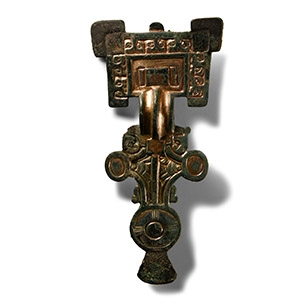
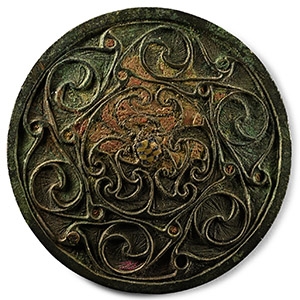

.jpg)
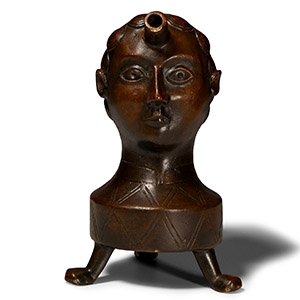
.jpg)

.jpg)
